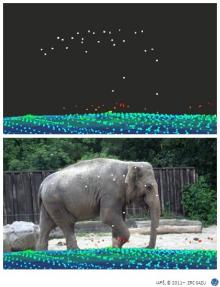Investigation of microrelief structures with airborne lidar
Principal Investigator at ZRC SAZU
Žiga Kokalj, PhD-
Original Title
Preučevanje mikroreliefnih oblik z zračnim laserskim skeniranjem
-
Duration
1 July 2011–30 June 2013

Recognition of natural and anthropogenic microrelief features, which can be observed on detailed laser scanning (lidar) derived terrain models, is of paramount importance in many applications. Because of the way lidar data are usually processed by data providers and uncritically applied by most users, microrelief features (their edges) are largely smoothed (generalized) beyond recognition or even completely removed from the terrain model. For this reason the purpose of the project is to improve their recognition on lidar-derived terrain models.
We are examining the recognition conditions of microrelief features, and testing and evaluating existing lidar data processing algorithms and elevation model visualizations techniques, with a special emphasis on four research fields:
(1) enhancement and optimization of existing lidar point cloud processing algorithms for recognition of microrelief features,
(2) defining a combination of visualizations that will enable high-quality visual interpretation of features, and will be a support for (semi)automatic detection,
(3) analysis of the potential for (semi)automatic identification, and
(4) application in different scientific fields.
A comparison of morphometric properties of natural and anthropogenic features of different landscape types with data acquisition parameters will allow for a more effective planning of aerial scanning flights. It will also be clearer what kind of features and under what conditions can be identified with a certain set of data. The enhancement of existing lidar data processing techniques and different visualization methods, visual interpretation and extensive fieldwork control will enable a more consistent (semi)automatic detection of boundaries of microrelief features and their quantitative properties.
Results of the project are fundamental to the study of environmental changes on Earth's surface (geography, geomorphology, water management, engineering geology, forestry, cartography), modern environmental and cultural management, and mitigation of natural hazards, as well as historical analysis of landscapes and its anthropological modifications (archaeology, palaeogeography, environmental history).
